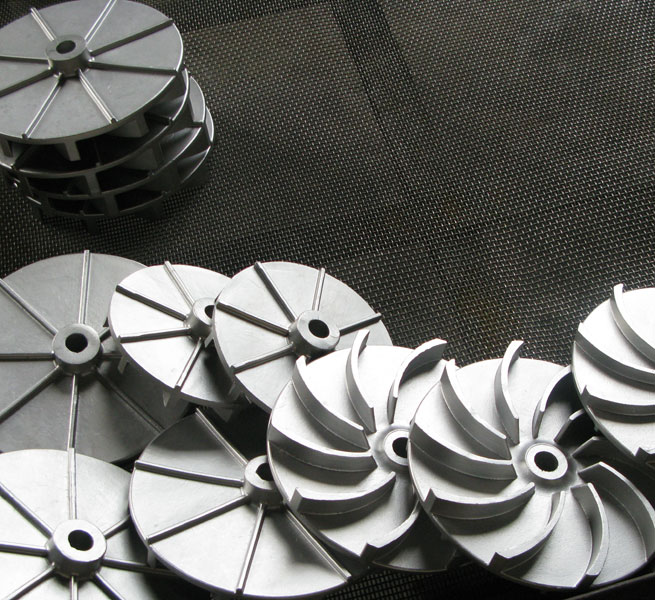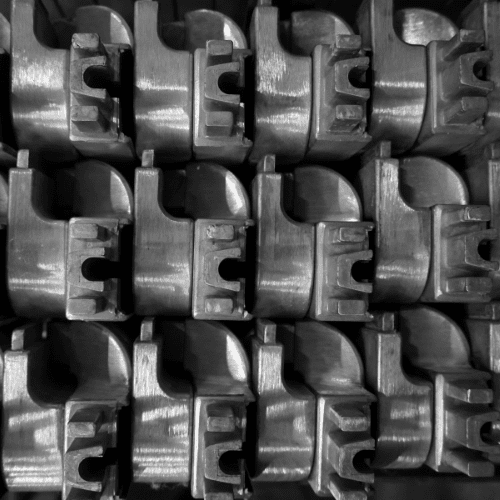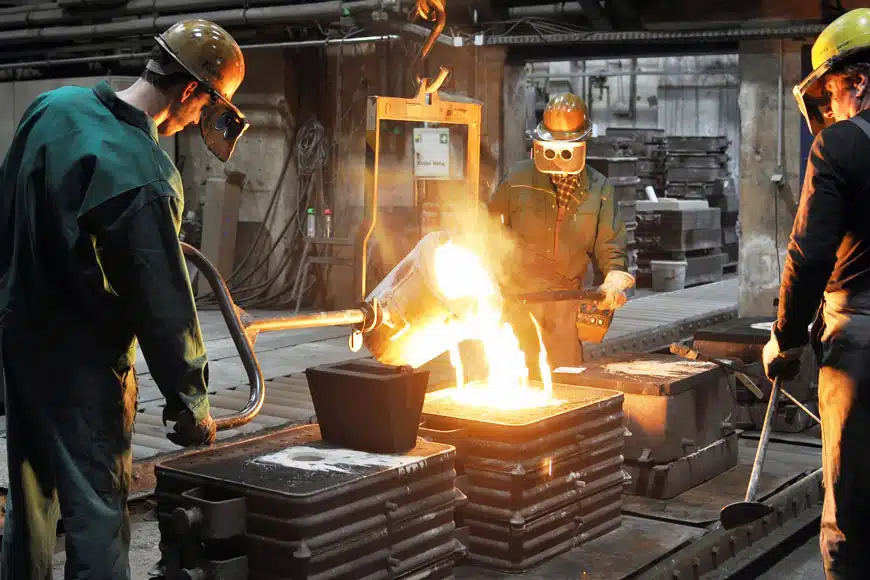Standardized vs. Custom Castings: A Detailed Analysis of Products and Key Requirements
2024-12-13 16:06:26 hits:0
1. Standardized Castings
Standardized castings are products that have fixed design, dimensions, and material specifications based on industry standards. These products can be purchased by customers based on these established criteria, without the need for complex custom designs.
Main Types of Standardized Castings
Automotive Parts
- Typical Products: Engine blocks, cylinder heads, wheels, brake discs, transmission housings, suspension system components, etc.
- Requirements:
- Materials: Typically use cast iron, aluminum alloys, steel alloys, etc., with high strength, wear resistance, and thermal stability.
- Dimensions & Tolerances: Must meet industry standards (e.g., ISO, ASTM) to ensure compatibility with other components.
- Surface Treatment: Typically requires high surface quality standards, including corrosion resistance and rust prevention.
Pipe Fittings
- Typical Products: Flanges, valves, joints, pipe fittings, etc.
- Requirements:
- Materials: Commonly use gray cast iron, ductile iron, stainless steel, carbon steel, etc., with excellent pressure resistance and corrosion resistance.
- Standards: Manufactured according to international standards (e.g., ISO, DIN, ANSI, API).
- Mechanical Properties: Must provide sufficient mechanical strength and durability, particularly in high-pressure and high-temperature environments.
Machinery Equipment Castings
- Typical Products: Gears, bearing housings, pump bodies, machinery frames, etc.
- Requirements:
- Materials: Cast iron, aluminum alloys, steel, etc., with a focus on wear resistance, strength, and toughness.
- Dimensions & Tolerances: Must follow mechanical equipment standards and industry specifications.
- Durability: Castings must have a long service life, especially for high-load components.
Construction Castings
- Typical Products: Brackets, window and door frames, railway track supports, infrastructure supporting parts, etc.
- Requirements:
- Materials: Cast iron, steel, etc., with high compressive strength, corrosion resistance, and seismic resistance.
- Standards: Must meet construction industry standards to ensure the safety of the structural components.
- Dimensions: Standardized dimensions and shapes to facilitate large-scale production and uniform usage.
Characteristics of Standardized Castings
- High Production Efficiency: Since the designs and dimensions are fixed, production processes can be optimized for mass production, reducing costs.
- Wide Applicability: These castings are used in various industrial fields, providing broad market coverage.
- Lower Technical Requirements: These castings generally have less complex technical requirements, and the manufacturing processes and inspection standards are well-established, ensuring stable mass production.
2. Customized Castings
Customized castings are designed to meet specific needs, particularly in industries where products require unique design, functionality, materials, and performance. These products cannot be directly supplied by standardized products, and the design and production cycle is relatively long, involving higher technical requirements.
Main Types of Customized Castings
High-End Machinery Equipment Castings
- Typical Products: Aerospace engine parts, hydraulic machinery components, heavy-duty machinery frames, precision castings, etc.
- Requirements:
- Materials: Often require specialized alloys (e.g., titanium alloys, nickel alloys, heat-resistant alloys) for high strength, corrosion resistance, and high-temperature tolerance.
- Design: Custom designs are typically based on the customer’s specific requirements, often considering extreme operating conditions (e.g., ultra-high temperatures, high pressures).
- Precision & Tolerances: Strict requirements for size and shape, with very tight tolerances and often requiring complex post-processing (e.g., heat treatment, surface finishing).
- Technical Support: Advanced design tools (e.g., CAD, CAE), simulation analysis, and validation processes are often necessary.
Energy Industry Castings
- Typical Products: Gas turbine blades, nuclear power pressure vessel components, wind turbine castings, etc.
- Requirements:
- Materials: Require extremely high strength, heat resistance, and corrosion resistance, with common use of alloy steels and heat-resistant alloys.
- Design Requirements: Custom-designed based on the energy needs of the client, requiring high reliability and long operational stability.
- Technical Complexity: Involves complex material science and thermodynamics analysis, with highly advanced manufacturing processes.
- Quality Control: Requires rigorous quality control and multiple testing and verification procedures, such as non-destructive testing and heat treatment quality control.
Aerospace Castings
- Typical Products: Aircraft engine components, flight control system parts, etc.
- Requirements:
- Materials: Require high-performance alloys such as titanium and aluminum alloys with exceptional heat, pressure, and corrosion resistance.
- Manufacturing Process: Requires precision casting techniques like lost wax casting or investment casting for high accuracy.
- Quality Requirements: Castings must undergo extensive quality testing, including crack detection, dimensional precision checks, and material strength testing.
- Design Complexity: Custom-designed for specific aerospace or space applications, involving high technical difficulty.
High-Performance Automotive Parts
- Typical Products: Racing engine components, custom wheels, brake system parts, etc.
- Requirements:
- Materials: High-strength, lightweight alloys (e.g., aluminum, magnesium alloys) to reduce weight and enhance performance.
- Design: Customized designs tailored for specific racing cars or special models, ensuring high-load and high-temperature operation.
- Surface Treatment: Often require precise surface treatments, such as electroplating or anodizing, to improve wear resistance and corrosion resistance.
Characteristics of Customized Castings
- High Technical Requirements: Customized castings are designed to meet specific functional and performance needs, requiring specialized materials and advanced manufacturing techniques.
- Longer Delivery Time: The design and production cycles for customized castings are typically longer, involving multiple design reviews, prototype testing, and adjustments.
- Higher Costs: Due to the technical complexity and typically smaller production volumes, customized castings tend to be more expensive.
- High Value-Added: Customized castings are usually used in high-end applications and thus have a higher value in the market.

 en
en  fra
fra  de
de  ru
ru  gle
gle  th
th  ara
ara  it
it  jp
jp  kor
kor  zh
zh 





